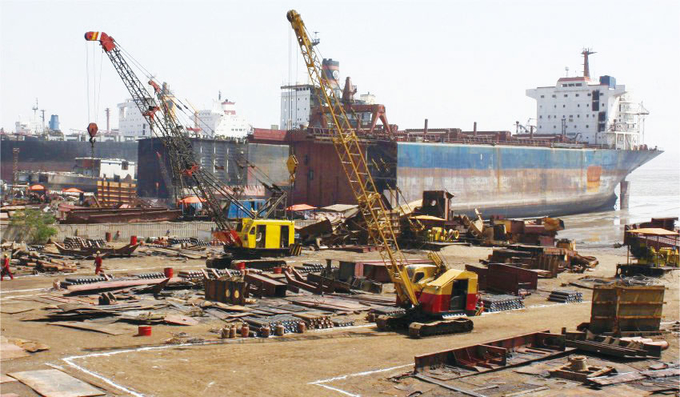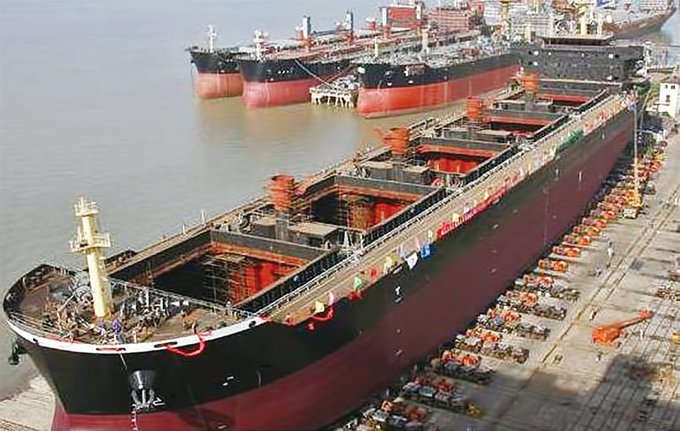
Shippers of commodities are in the midst of an unprecedented crisis as waning Chinese growth and a surge in supply push earnings to new lows. These charts show how it happened, how commodity shipping is collapsing and how there’s one glimmer of hope for owners to turn things around.
1. Vessels, Vessels Everywhere
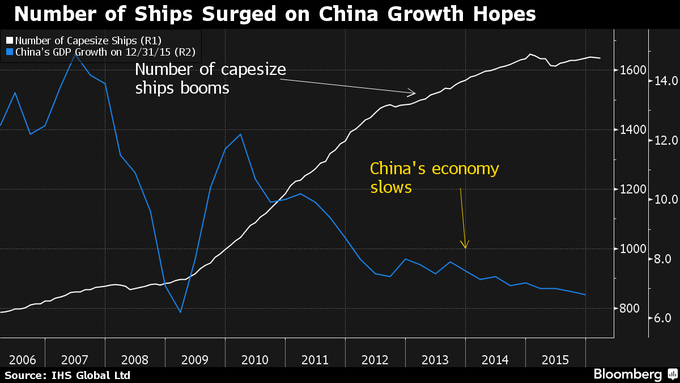
In the mid-to-late 2000s ship owners gambled that China’s economy would continue to grow at about 10 percent a year. The result: the number of the largest commodity carriers, called Capesizes, has almost doubled since 2008. The fleet hit a record 1,655 vessels in early 2015 — the same year in which the Chinese economy grew at the slowest pace in 25 years. Owners are now fighting for whatever market share they can get.
2. Trade Growth Collapses
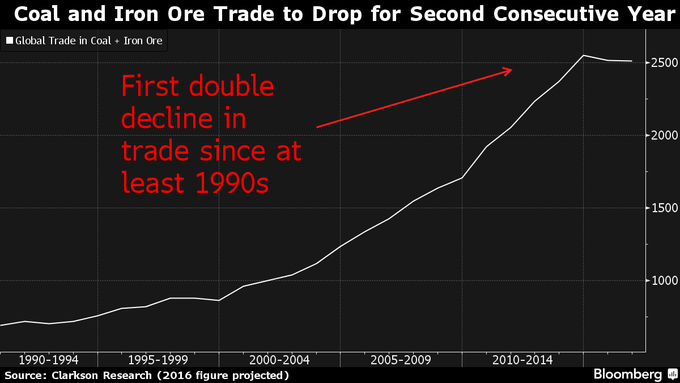
Clarkson Research forecasts that this year will see a second consecutive drop in the amount of coal and iron ore shipped around the world. Not since data going back to 1990 has the world seen two consecutive declines in the trade of those two key commodities. Coupled with near-record numbers of ships, that’s leading to enormous losses for the world’s owners. Golden Ocean Group Ltd. said last month it lost $69 million in the final quarter of 2015, versus net income of $5.2 million a year earlier.
3. Plunging Earnings
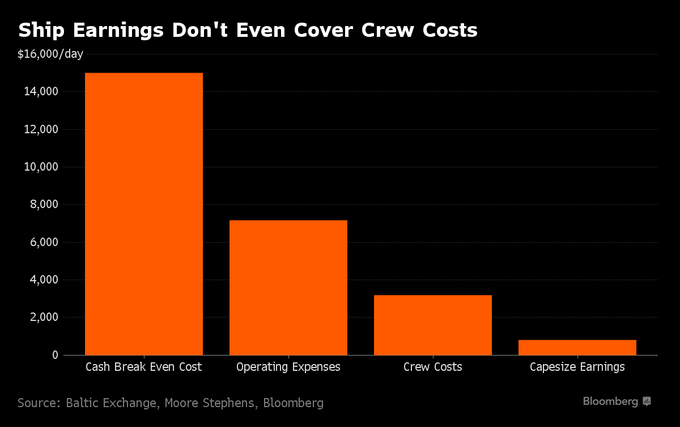
Slowing demand for ships and a glut of supply can only mean one thing: record low costs to lease them. Capesize carrier fees have been breaking new lows almost every day this year, and now don’t even cover a third of the daily cost of their crew. When other operating costs and financing costs are included, owners stand to lose around $14,000 a day per ship.
4. Vessel Prices Fall by Almost 50 Percent
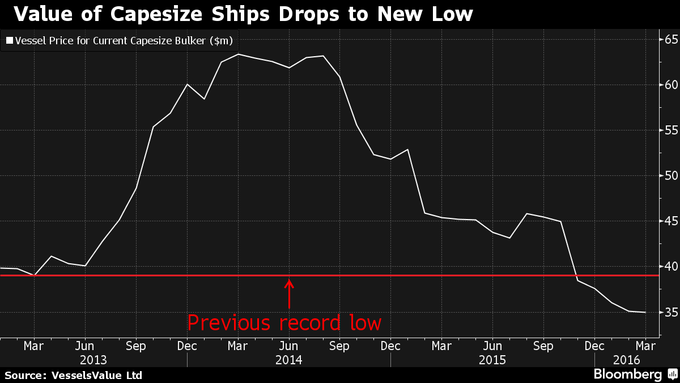
When you’re making a loss on every transaction, it might seem like a good idea to sell some ships to raise capital. But in the Capesize market, carrier prices have plunged. A ship that would have cost $65 million in 2014 would now cost just $35 million. That leaves owners, some of whom borrowed to buy, with an even trickier predicament when trying to stabilize their finances.
5. Stock Prices Suffer
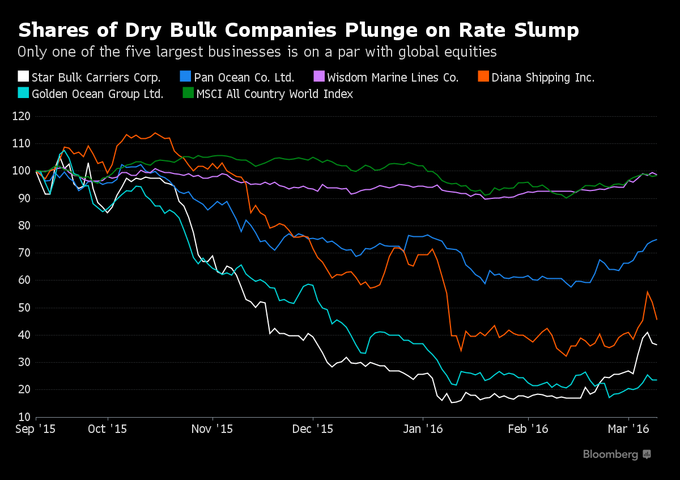
The five largest publicly traded shipping companies with fleets dominated by dry-bulk carriers, according to Clarkson data, are almost all down in the past six months, a $1.3 billion decline in total market value. Only Taiwan’s Wisdom Marine Lines Co. matches the performance of the MSCI All Country World Index, a result of buying energy-saving Japanese-made vessels that can get a better leasing contract price, according to Yukai Tsai, an analyst at Jih Sun Securities Investment Consulting.
6. Is Junking Ships The Answer?
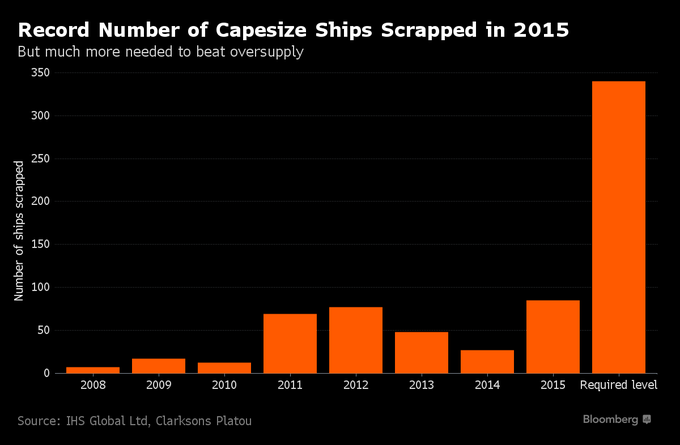
Analysts say the only way the oversupply will be dealt with is through record amounts of scrapping. Although a record 85 ships were demolished last year, Herman Hildan, a shipping-equity analyst at Clarksons Platou Securities in Oslo, says that the equivalent of 340 Capesize ships still need to be broken up before earnings can return to normal.
(Source : Bloomberg)